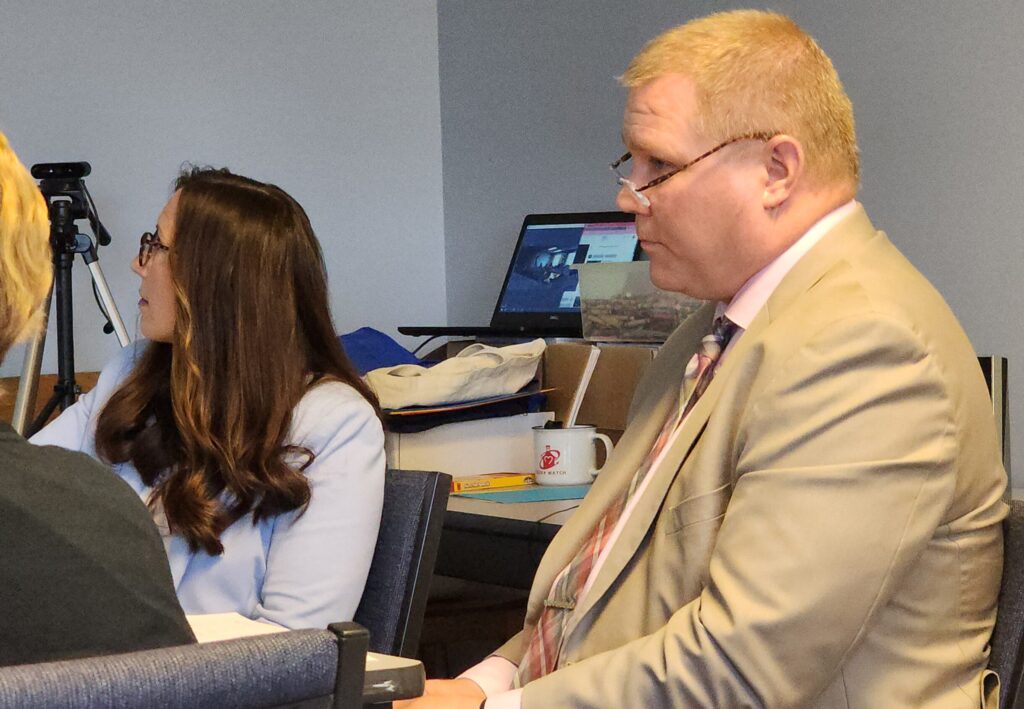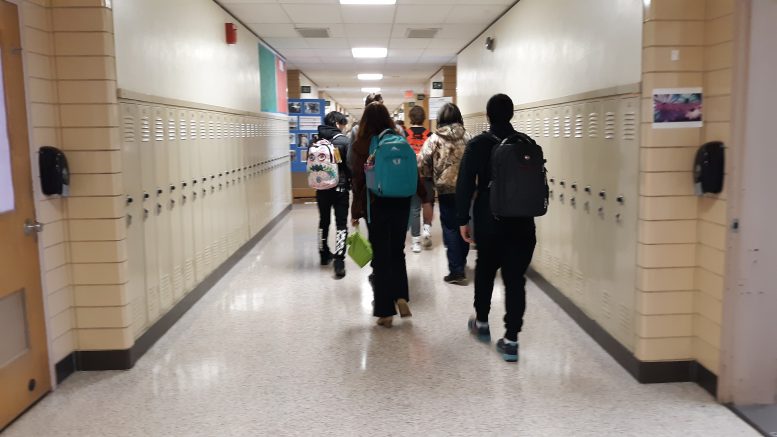By JAN LARSON McLAUGHLIN
BG Independent News
Bowling Green Board of Education agreed Tuesday to go back to voters in November for a bond issue to build a new high school.
In spite of multiple losses at the polls, and some PTSD among board members, the board came to the conclusion during a special meeting that a new high school is needed, that it will never get any cheaper to build, and that a new groundswell of support is being felt throughout the community.
The amount needed for a $72.8 million high school is estimated at 5.53 mills – costing the owner of a $100,000 home $193 a year.
To complicate matters, the district currently faces dual needs – a new building and new operating money.
The board debated the timing of a bond issue and an operating funds levy. Treasurer Cathy Schuller explained the district last passed a new levy for operations in 2010.
“It’s been 13 years since we’ve asked for new money,” she said, adding that the average time between new money requests is 9.75 years.
Schuller presented the option of putting a 0.5% income tax on the ballot to raise $4.8 million for operations.

So the board was faced with the possibility of trying a bond issue for a high school, an income tax for operating expenses, or both in November.
Several factors were considered:
- The 4% inflation in construction has already caused the cost of a new high school to jump from $70 million last fall to $72.8 million now.
- In the last primary election, 75% of school issues on the ballot in Ohio failed. Schuller noted the cost of a bond issue for a home valued at $100,000 must now appear in the ballot language in Ohio.
- While the board has filed for help through the Ohio Facilities Construction Commission, the school district must pay all costs up front. If approved, BG Schools could be in line for $13 million in OFCC funding.
- The district will be negotiating with both of its unions next spring. Ideally, there would be enough money in the operating budget to contract for more than two years.
Board member Ginny Stewart wondered about delaying the building project until spring of 2024 – passing an operating levy first and giving the new superintendent, Ted Haselman, more time in the job.
“As a voter, I think I’d rather see that we’ve done something to get us in better shape,” Stewart said.
Board President Ryan Myers voiced support for trying the high school levy in November, and the operating money later.
“Neither one of these issues are going away,” Myers said, noting the community is very aware of the condition of the aging school buildings.
Board member Norm Geer agreed.
“I think the community is expecting us to put the high school on the ballot in November,” Geer said, noting the building issue has been on hold for seven years. “I think now is the time to go forward with the high school.”
Myers echoed those feelings.
“I agree with Norm on this. I feel there’s a lot of support right now and a lot of expectations,” Myers said. “There’s a little bit of momentum” that hasn’t been there before, he added.
“I think we’ll disappoint a lot of people if we don’t put the high school on in November,” Geer said.

Superintendent Francis Scruci, who is retiring at the end of July, said the architectural firm hired for building plans will be in town on Thursday, will tour some of the school buildings, and will meet with OFCC officials.
Scruci agreed that there is a new wave of support in the community for a new high school.
“We’ve never had mayoral endorsements publicly,” at the State of the City Address earlier this year. And there’s a strong grassroots effort to get the issue passed, he added.
“If not now, then when?” Scruci asked. “There’s always going to be an obstacle.”
Incoming superintendent Dr. Ted Haselman was asked his thoughts on the upcoming ballot issues.
“Being in the seat for three months and having a levy on the ballot is kind of scary,” Haselman said.
But Haselman said he had studied the district’s finances before accepting the job. “I knew one or the other was coming very shortly,” he told the board.
Board member Tracy Hovest expressed some hesitation about putting the operating levy on hold.
“I’m torn,” she said. Both issues are needed – it’s just a question of when, Hovest said.
Schuller said pipeline tax revenue could be diverted from the capital improvement fund to operations funding. If the pipeline were to lose its appeal, the district could have enough operating funds to carry it to 2025, she said.
Myers asked about the possibility of putting both the building bond issue and the operations income tax on the ballot in November. Scruci said the district would risk both issues failing.
Scruci pointed out the ever rising costs for construction. Seven years ago, the district tried to replace its oldest buildings for $70 million total. That amount won’t even pay for the high school now, he added.
“That cost isn’t going to get any cheaper,” he said.
Hovest agreed that further delays on building a new high school would only get more expensive.
“I think we need to stop the bleed at some point,” she said. “We need to create these facilities that the kids deserve, that the teachers deserve, that the community deserves.”
Board member Jill Carr expressed hesitation about trying a building levy again after so many failures.
“It’s hard for me to be positive,” she said, adding that she favored waiting till spring of 2024 for the building bond issue.
“I just can’t get those feelings of defeat out of the head,” she said.
Stewart also questioned if the district would have enough time to get all the information about the bond issue disseminated to the public before the November election.
“Clearly we need a new building,” but Stewart feared the process was being rushed.
“I want the community to know we’re thinking this through and being fiscally responsible,” Stewart said.
But when it came down to making a decision, the board united behind putting a high school bond issue on the November ballot.
“Get your running shoes on,” Hovest said to Haselman.

After the meeting, Haselman said his current district, Delta-Pike-York, has newer buildings than Bowling Green City Schools. And when he toured BG schools, the building needs were obvious.
“It’s not a surprise we are looking at these square in the mouth,” Haselman said.
Facilities do matter, he said. “We want to have the best learning environments.”
“I’m going to get my running shoes laced up,” Haselman said.
The board will vote at its June 27 meeting on a special needs resolution and a necessity for bonds resolution. By July 10, the board will need to file the special needs resolution with the Ohio Department of Education and Ohio Department of Taxation. By July 18, the board will have to pass a resolution to proceed for bonds. Then by Aug. 1, the board must file with the Board of Elections to be on the Nov. 7 ballot.

